Site Navigation
Chrome Remote Desktop Setup Page
Chrome Remote Desktop is a Google developed client-server framework that allows for remote desktop access to (in this case) a headless machine.
If you need to install Chrome Remote Desktop on the image
Installing Chrome Remote Desktop (CRD) on a Custom Image
If you have a custom image that lacks Chrome Remote Desktop (CRD), follow these steps to install and configure it (based on Google CRD Installation page).
1. Update System Packages
sudo apt update && sudo apt upgrade -y
2. Install a Desktop Environment (XFCE)
If the custom image lacks a graphical desktop, install XFCE:
sudo apt install xfce4 xfce4-terminal -y
3. Install Chrome Remote Desktop (CRD)
Download and install Chrome Remote Desktop:
wget https://dl.google.com/linux/direct/chrome-remote-desktop_current_amd64.deb sudo dpkg -i chrome-remote-desktop_current_amd64.deb sudo apt-get install -f -y echo "exec /etc/X11/Xsession startxfce4" > ~/.chrome-remote-desktop-session
Enable and start the CRD service:
sudo systemctl enable chrome-remote-desktop sudo systemctl start chrome-remote-desktop
4. (Optional) Install Google Chrome
If needed, install Google Chrome:
wget https://dl.google.com/linux/direct/google-chrome-stable_current_amd64.deb sudo dpkg -i google-chrome-stable_current_amd64.deb sudo apt-get install -f -y # Fix missing dependencies
In order to access a node that has Chrome Remote Desktop server side installed, you need to:
Step 1
Access the remote access page on your local Chrome browser and hit the Begin button:
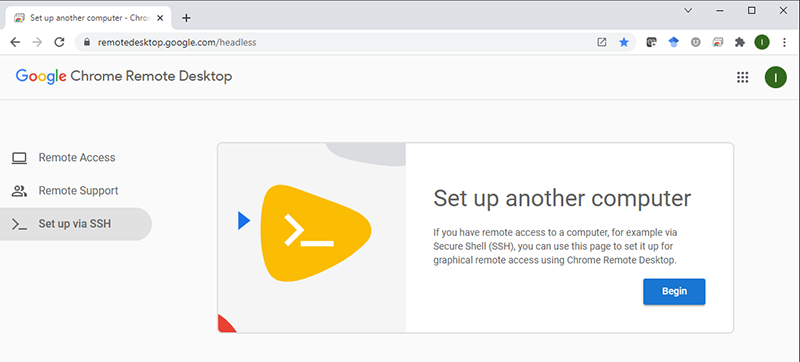
Step 2
Select the Next button (under the assumption that you already have remote desktop service installed on the target node):
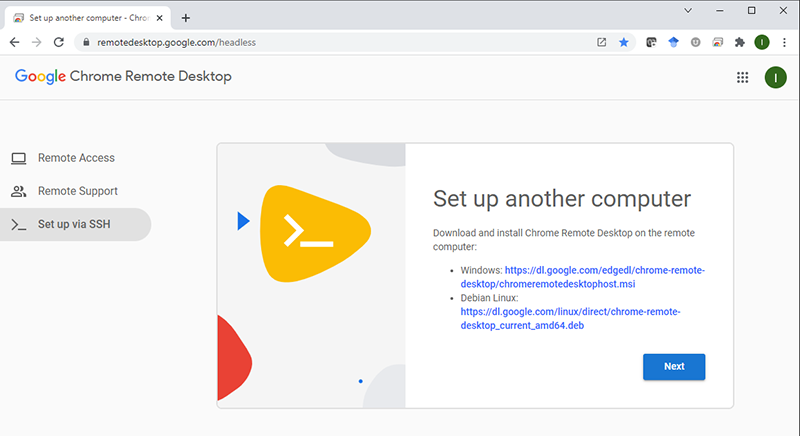
Step 3
Generate authorization token for the node but hitting the Authorize button
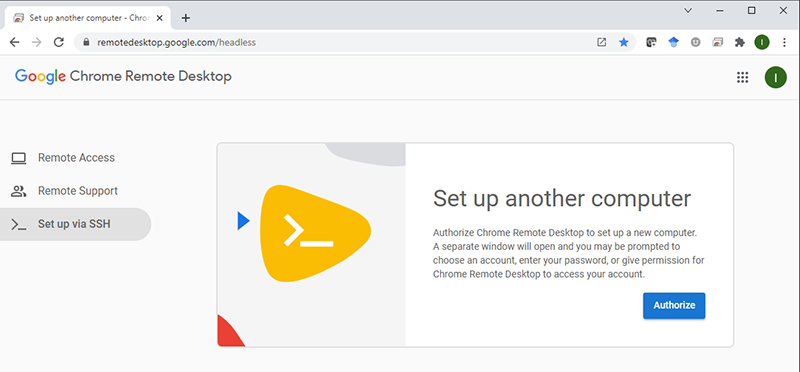
Step 4
Copy the command line with the token to you clipboard by selecting the target OS Copy button (icon to the right of the command line content pane - example below points at the copy button for the Linux platform)
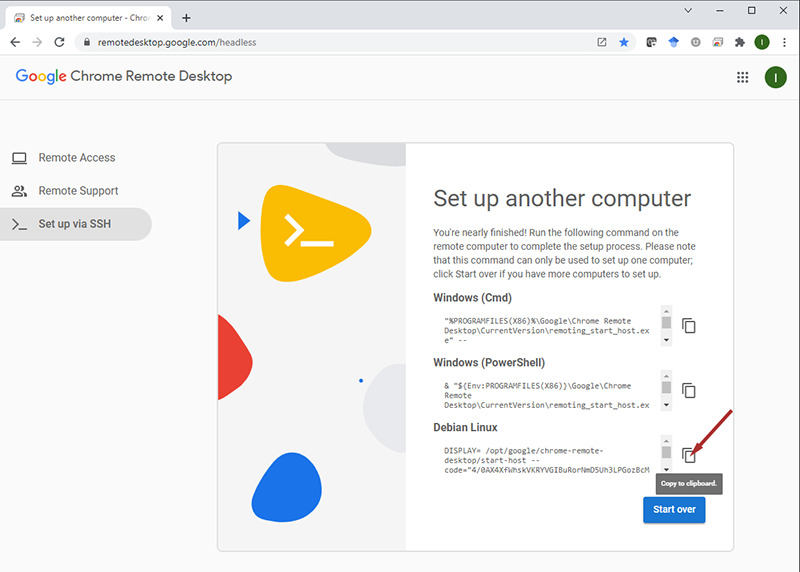
Paste that command line in the remote ssh session on the node command line (typically not as a root user but rather as a user that was created for the remote access).

As shown in the above figure, the service will prompt you (twice) for a PIN number that will be needed in the next step as an additional security feature.
Step 5
Switch to the Remote Access mode in your local browser:
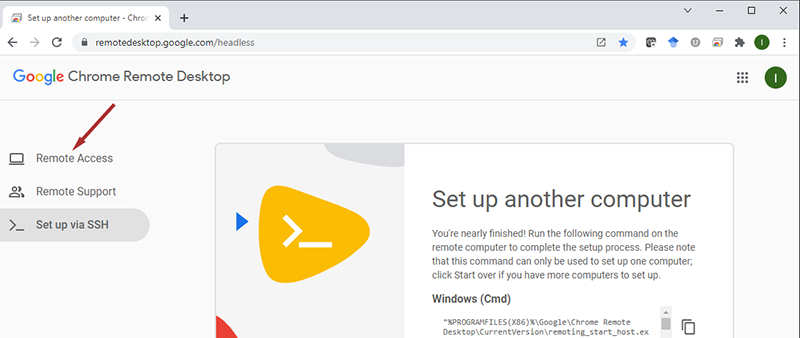
Step 6
If the authorization was successfully applied you should see the node listed under the Remote devices section:
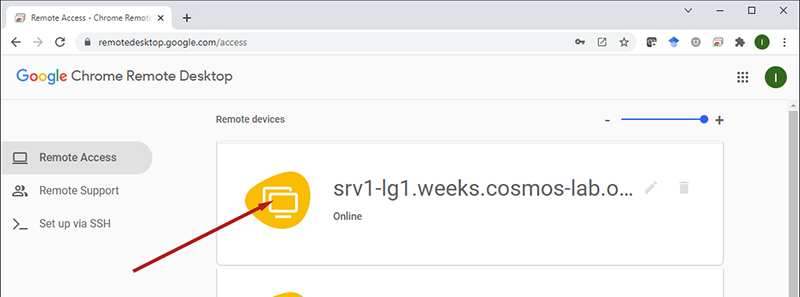
Select that node and you should be prompted for the PIN created in Step 5:
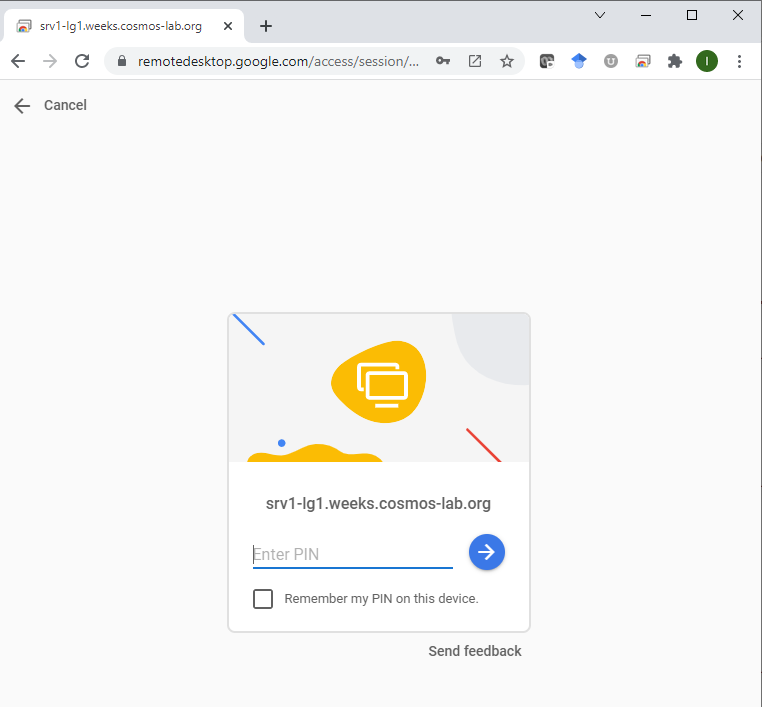
Step 7
Once the pin is successfully entered, you should be rewarded with the remote desktop access within your browser:
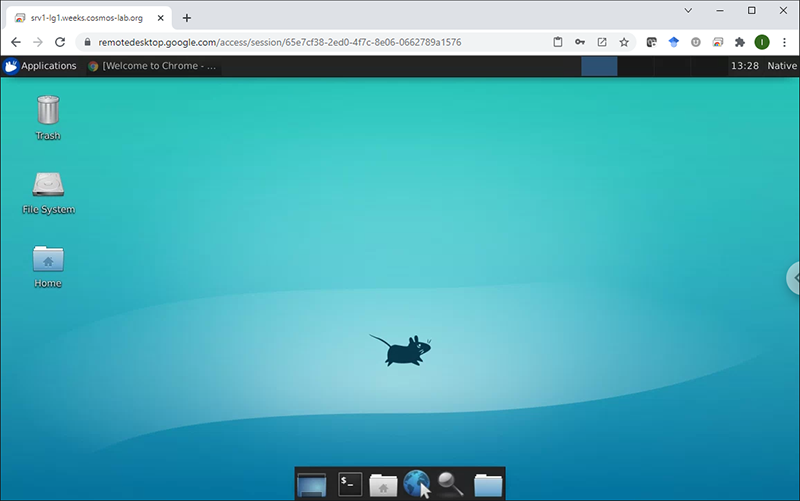
Important note: Chrome Remote Desktop authorization toke can't be saved with the image and will not "survive" reboots i.e. you will have to re-authorize access every time node is booted!
Attachments (9)
- Step1.png (54.9 KB ) - added by 4 years ago.
- Step2.png (63.2 KB ) - added by 4 years ago.
- Step3.png (59.9 KB ) - added by 4 years ago.
- Step4.png (95.4 KB ) - added by 4 years ago.
- Step5.png (67.5 KB ) - added by 4 years ago.
- Step6.png (43.6 KB ) - added by 4 years ago.
- Step6a.png (32.0 KB ) - added by 4 years ago.
- Step7.png (99.5 KB ) - added by 4 years ago.
- Paste.png (131.5 KB ) - added by 4 years ago.
Download all attachments as: .zip
